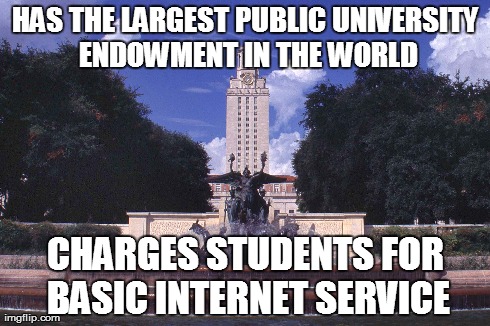You are here
Enthy/memes: Making Memes to Teach Logos
Primary tabs

Traquan Minor, created on imgflip.com
To pratice creating and breaking down enthymemes, I had students create memes (about anything), break down the stated and unstated premises and ultimately, come to a conclusion as to the meme's argument.
If not in a technology-based classroom, then having students bring laptops to class or having them do this at home (after modeling it and providing examples) would also work.
I usually take about 30 minutes for this, including time for us to break down enthy/memes (ex. Hipster Little Mermaid) together. You should have gone over enthymemes in a previous lesson and reviewed them before doing the assignment. I used this assignment in a unit focusing on rhetorical analysis, allowing students to both create and break down enthy/memes. You could also just let students break down the enthy/memes. After we break down the examples, I give students suggested memes and meme-generating websites to use (memegenerator.net or imgur.com/memegen but you can google "meme generator" and find many others). Then they are given about 20 minutes to make the meme, break down its stated and unstated premises and then post it to Discussion Board or some other class forum for student and instructor feedback.
Find a few memes that you think are current enough to use as "enthy/meme" examples. You can use joke ones that are steeped more in cultural knowledge rather than direct argument (ex. All Your Base) to begin with but also be sure to use ones that are making more nuanced arguments. Create exemplars for them to view which show what kind of structure you want them to use when breaking down their enthymeme. Have these available on a class website or other source. Be sure to scout out some meme generator sites and give them to students so that they don't waste time trying to pick one out.
Students wil break down your example "enthy/memes" as a whole group exercise, and if desired (though this would make the activity longer), in small group settings. Once they have seen a few exemplars, they will go to a meme-generator site, create their own meme and then break down the premises (stated and unstated) in their meme along with the main argument of the meme. They will then post this to an on-line class forum for feedback. I usually give students 20 minutes to do this and if some students are very creative, I encourage them to do more than one. I have also done this in pairs, in case students are afraid that they can't come up with something good enough on their own in the time given.
I often grade this as a participation grade or as a grade for homework. This should not be a major grade and can even be just an informal assessment. However, I highly suggest having students view and comment on other classmates' work and also for the instructor to leave feedback which focuses on how well they broke down the premises of the enthy/meme.
Overall, this has been a popular lesson and one that some of my colleagues have taken up in their classes as well. It's important to let students know that you aren't grading them on cleverness but rather on the ability to make and break down an argument by enthymeme. Some students feel flustered and think there isn't enough time, or get bogged down in making a "great" enthymeme, so you can choose to give more time or to give students who do not have a polished product in class a chance to turn it in by a certain time in the evening as homework as to alleviate that stress. However, students have loved the chance to be creative and that they get to play with something that they are very familiar with. I think it helps them re-think the meme as something a bit more complex. As a teacher who finds teaching logos so hard, it helped me feel more comfortable as well as it helped to make the enthymeme more tangible.
Here is another exemplar meme created by my students. As you can see, this can allow for deeper analysis of issues like race, sex, class, sexuality, disability, etc. You could even use this as an exemplar in class and break down the stated and unstated premises (and how it works to subvery them) as a class to see how memes can be thought-provoking as well.
I assigned this in a RHE 309K class, which is a class just a step above the introductory writing course. Many students who tested out of the introductory RHE 306 take this class as well as others who are required to take it by the school or major they are pursuing. This class is still focused on writing but centers around a particular topic/controversy in order to teach those skills.
-

- Log in to post comments


